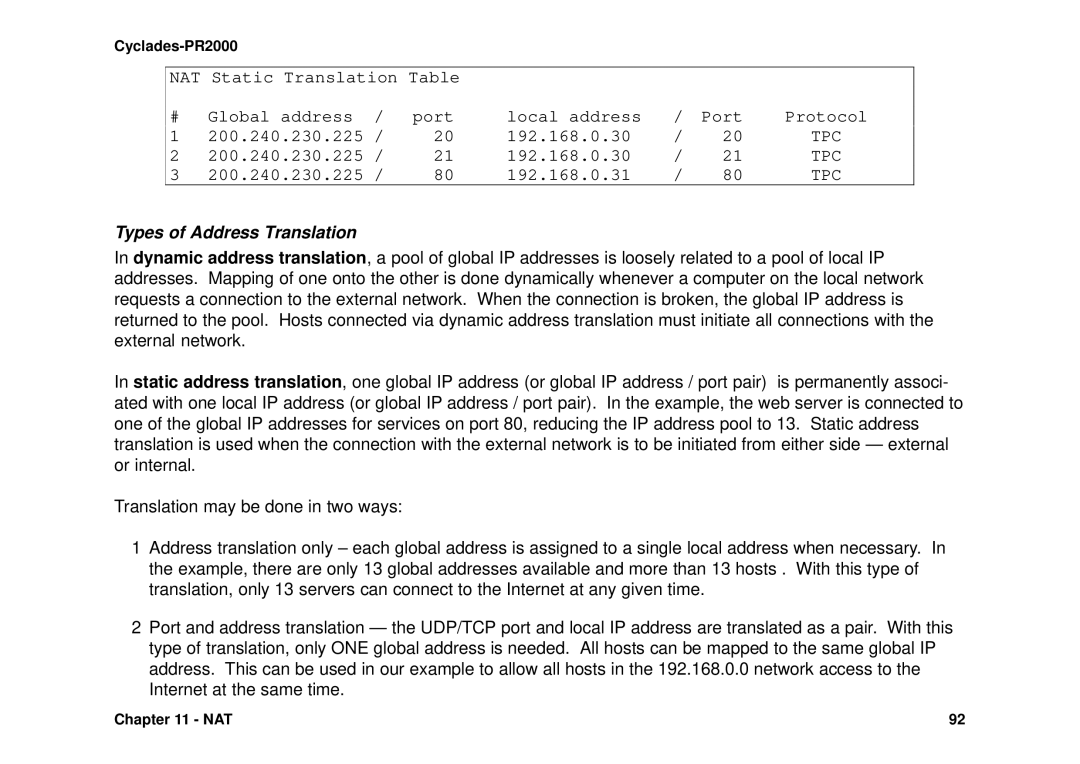Cyclades-PR2000
NAT Static Translation Table |
|
|
|
| ||
# | Global address / | port | local address | / | Port | Protocol |
1 | 200.240.230.225 / | 20 | 192.168.0.30 | / | 20 | TPC |
2 | 200.240.230.225 / | 21 | 192.168.0.30 | / | 21 | TPC |
3 | 200.240.230.225 / | 80 | 192.168.0.31 | / | 80 | TPC |
Types of Address Translation
In dynamic address translation, a pool of global IP addresses is loosely related to a pool of local IP addresses. Mapping of one onto the other is done dynamically whenever a computer on the local network requests a connection to the external network. When the connection is broken, the global IP address is returned to the pool. Hosts connected via dynamic address translation must initiate all connections with the external network.
In static address translation, one global IP address (or global IP address / port pair) is permanently associ- ated with one local IP address (or global IP address / port pair). In the example, the web server is connected to one of the global IP addresses for services on port 80, reducing the IP address pool to 13. Static address translation is used when the connection with the external network is to be initiated from either side — external or internal.
Translation may be done in two ways:
1Address translation only – each global address is assigned to a single local address when necessary. In the example, there are only 13 global addresses available and more than 13 hosts . With this type of translation, only 13 servers can connect to the Internet at any given time.
2Port and address translation — the UDP/TCP port and local IP address are translated as a pair. With this type of translation, only ONE global address is needed. All hosts can be mapped to the same global IP address. This can be used in our example to allow all hosts in the 192.168.0.0 network access to the Internet at the same time.
Chapter 11 - NAT | 92 |
